
Filed under: Digital employee experience, Digital workplace, Latest Features
A strong digital employee experience (DEX) for new starters can have a highly positive impact on organisations, by increasing the retention of employees, ensuring new hires can get started in their roles more quickly, reducing costs through efficiency gains and encouraging adoption of digital workplace tools.
Get onboarding DEX right and both your new hires and your senior stakeholders will be happy. There are broadly four steps to improve the onboarding of DEX:
- conduct staff research
- assemble an onboarding taskforce
- target moments that matter
- establish ongoing governance
In carrying out these steps, teams should be able to design and deliver a good onboarding DEX which can:
- provide an overview of all the tasks that need to be done, reducing the confusion and stress associated with starting a new job
- offer some continuity between the ‘candidate experience’ going through the recruitment process and the employee experience
- offer orientation to a new employee so they get to know their new organisation and location
- provide resources and learning so they can self-start in their particular role
- make an employee feel welcome and energised
- complete any tasks which can be completed prior to starting so everything is ready for their first day
- provide support over the first few months, particularly if there is an ongoing onboarding program
- deliver efficiencies for the organisation
A range of tactics can be deployed to provide a good onboarding DEX, from the relatively simple to the highly complex. Here are a few examples of what organisations have chosen to implement.
New starters area on the intranet at NEXT DC
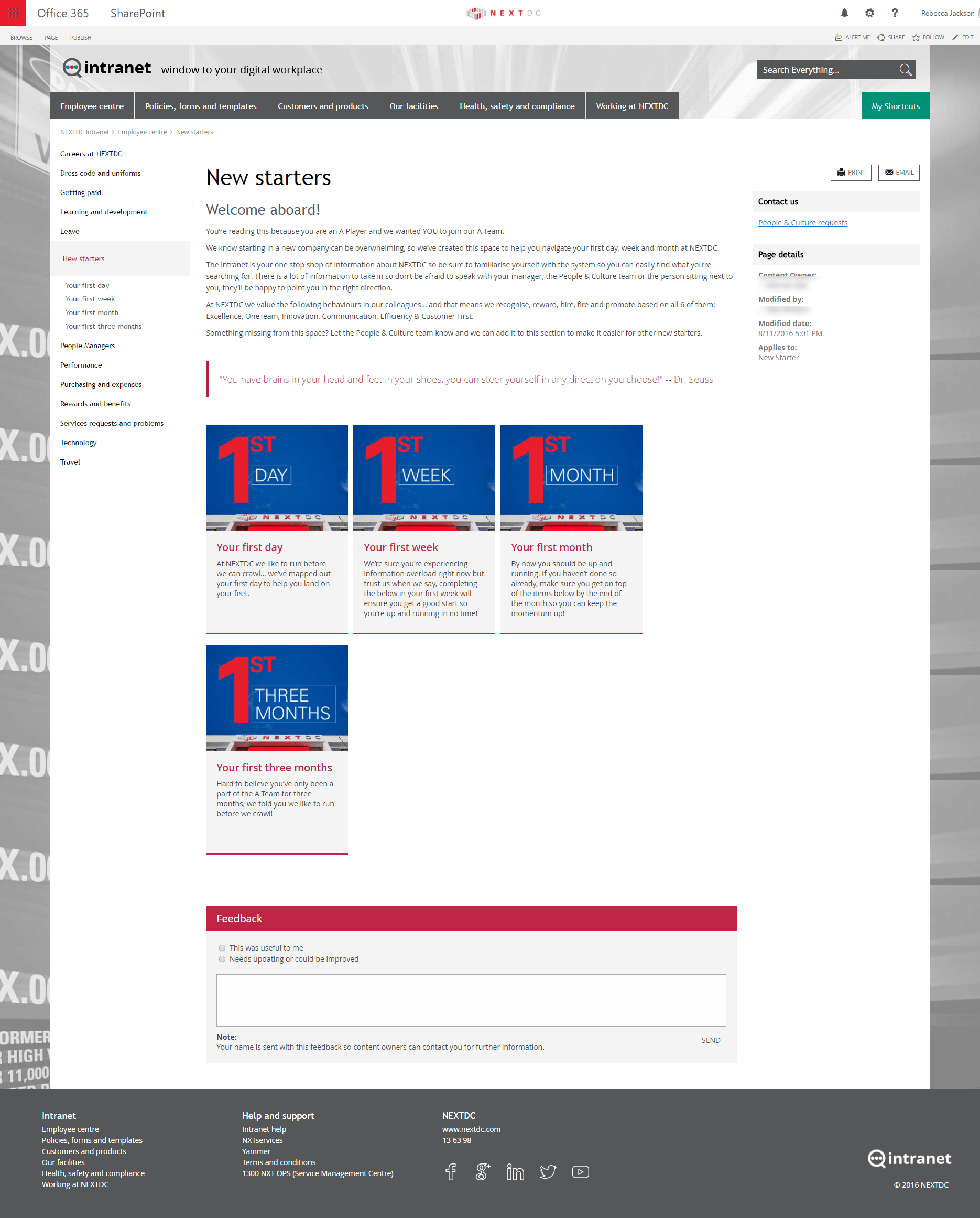
The new starters area on the NEXTDC intranet. Screenshot appears courtesy of NEXTDC.
A common and nearly always valuable use case for intranets and HR portals is an area for new starters, where those joining can access different resources to help them onboard. Companies choose to deliver these areas in different ways — for example, some provide a walkthrough of key company information such as strategy and values, while others provide a window on different communities. Australian technology company NEXTDC’s new starter area is more process-led, with key information structured around the key stages of the new starter experience.
NNE’s onboarding portal

NNE’s onboarding portal and one of its missions. Screenshot appears courtesy of NNE.
Sometimes organisations choose to deliver something ambitious. Danish engineering firm NNE introduced a global onboarding program for new employees to drive a one company culture, reduce employee turnover, help new starters get up to speed and deliver better services to customers. Using integration between a variety of systems including the intranet, corporate website and the e-learning system, the company created an onboarding portal called ‘Navigate’ where new employees are presented with three ‘missions’ to complete. This gamified approach is fun and engaging,
The first mission starts before the new starter’s first day at the company, with the second and third completed after they join. Using a variety of learning modules, videos, games and other content, employees learn about the company, different processes and customers. Thee are also welcome videos from senior leaders. Although NNE’s onboarding program is a global one, there is some variation in content based on different locations and roles. The onboarding experience is also delivered across different channels, with a Navigate ‘widget’ on the company intranet to remind new starters to complete their missions.
Telstra’s Welcome mobile app
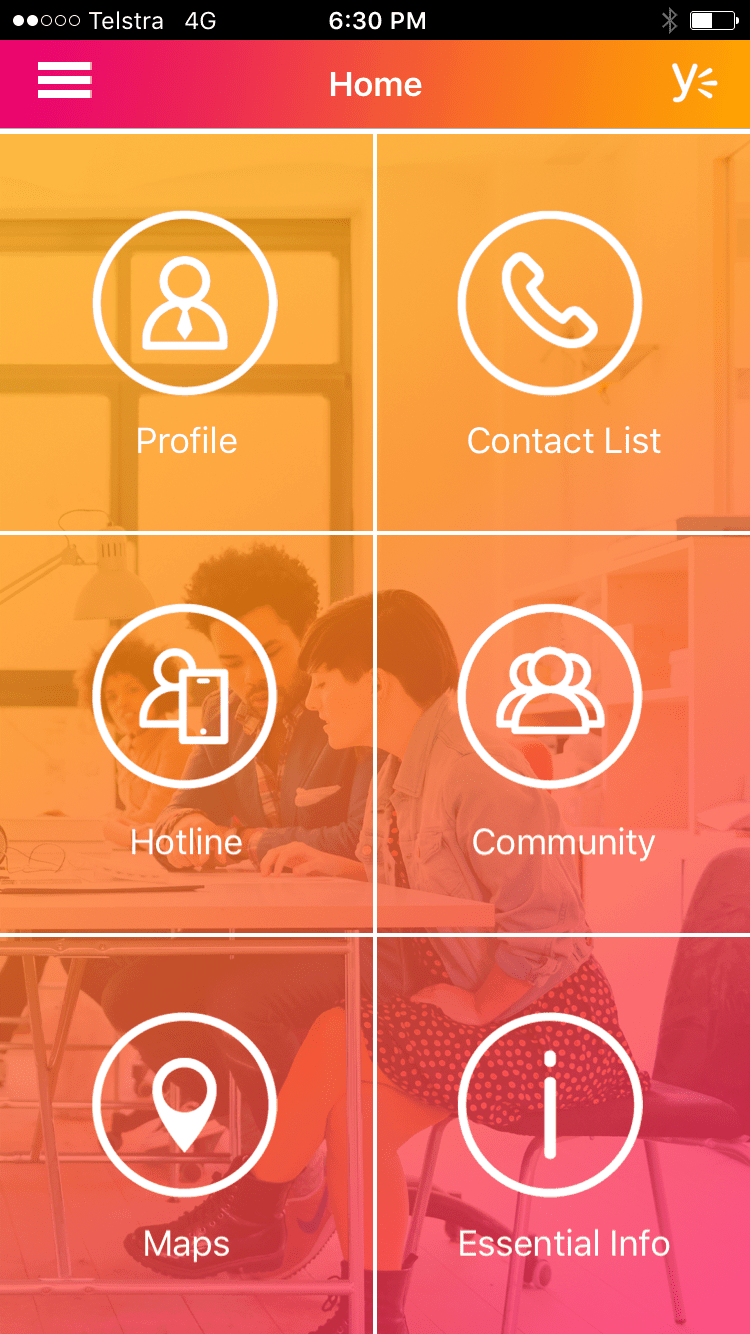
The home screen of Telstra’s Welcome app for new hires. Screenshot appears courtesy of Telstra.
Australian telecommunications company Telstra complements its onboarding program with the ‘Welcome’ mobile app. Here new starters can look up key information and contacts on the go. The app is designed to help employees feel welcome, get to know Telstra and connect with their colleagues.
To ensure a strong DEX, in 2016 the app was completely redesigned and deployed on the Xamarin platform, providing faster access and better interactions with existing and new features such as Yammer integration, a Jargon Buster and Google Maps to make it easy for employees to spot the best café close to their new Telstra working location.
Vodafone Ukraine’s personal KPIs for new starters
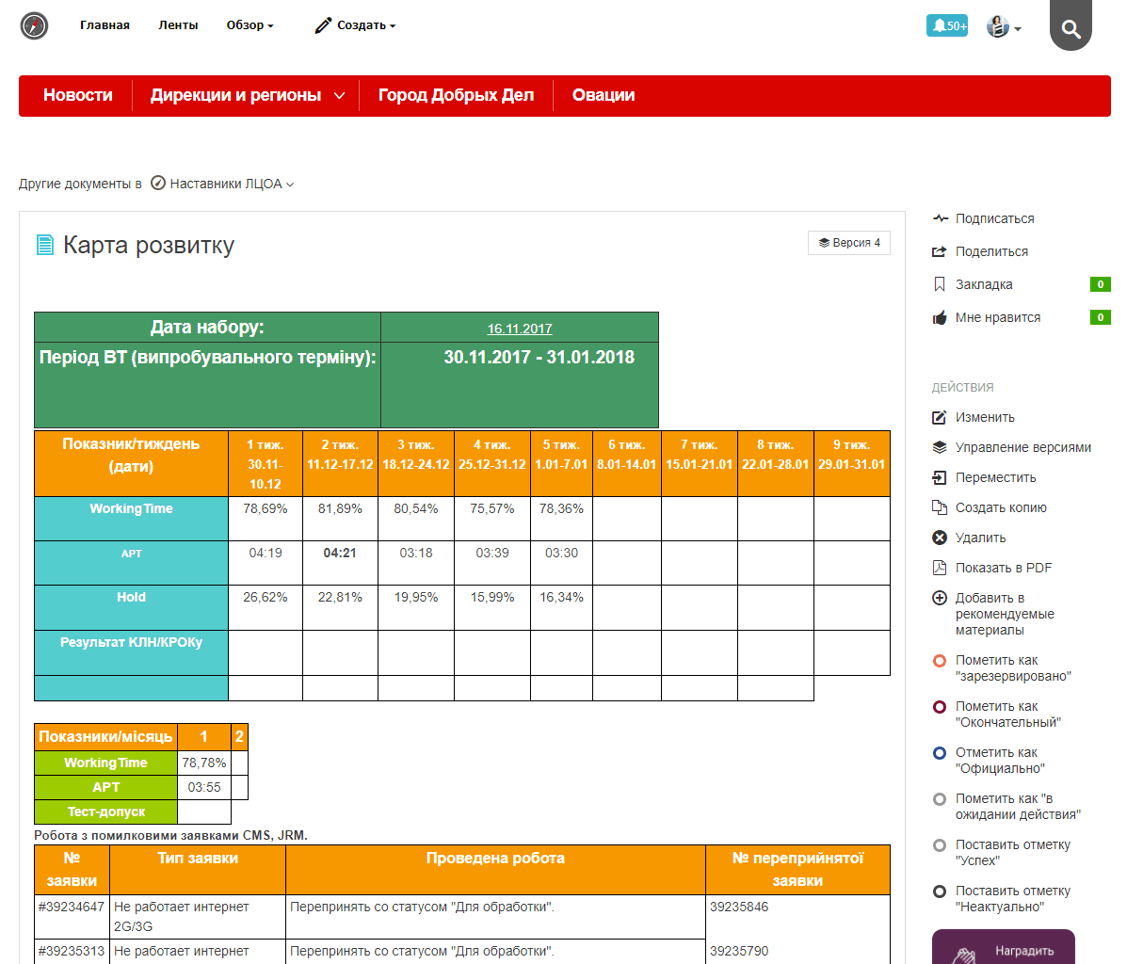
Vodafone Ukraine’s intranet is embedded with HR tools including a personal development roadmap which is used to help onboard new employees in the contact centre. Screenshot appears courtesy of Vodafone Ukraine.
The customer service centre at Vodafone Ukraine traditionally has high turnover. To increase efficiency and retention, the team uses the intranet to support a focused employee onboarding initiative which is designed to get new employees up to speed more quickly. One of the ways employees use the intranet is to access their personal development plans where weekly personal KPIs are tracked for the first nine weeks of employment. A range of other learning resources, interesting content and even games are also accessed through the intranet, included recorded calls with customers to help new agents learn about customer needs. This blended approach not only ensures a good DEX, but Vodafone Ukraine has also calculated annual savings of around $120,000 USD from the improved onboarding process.
SMU’s new faces on campus newsletter
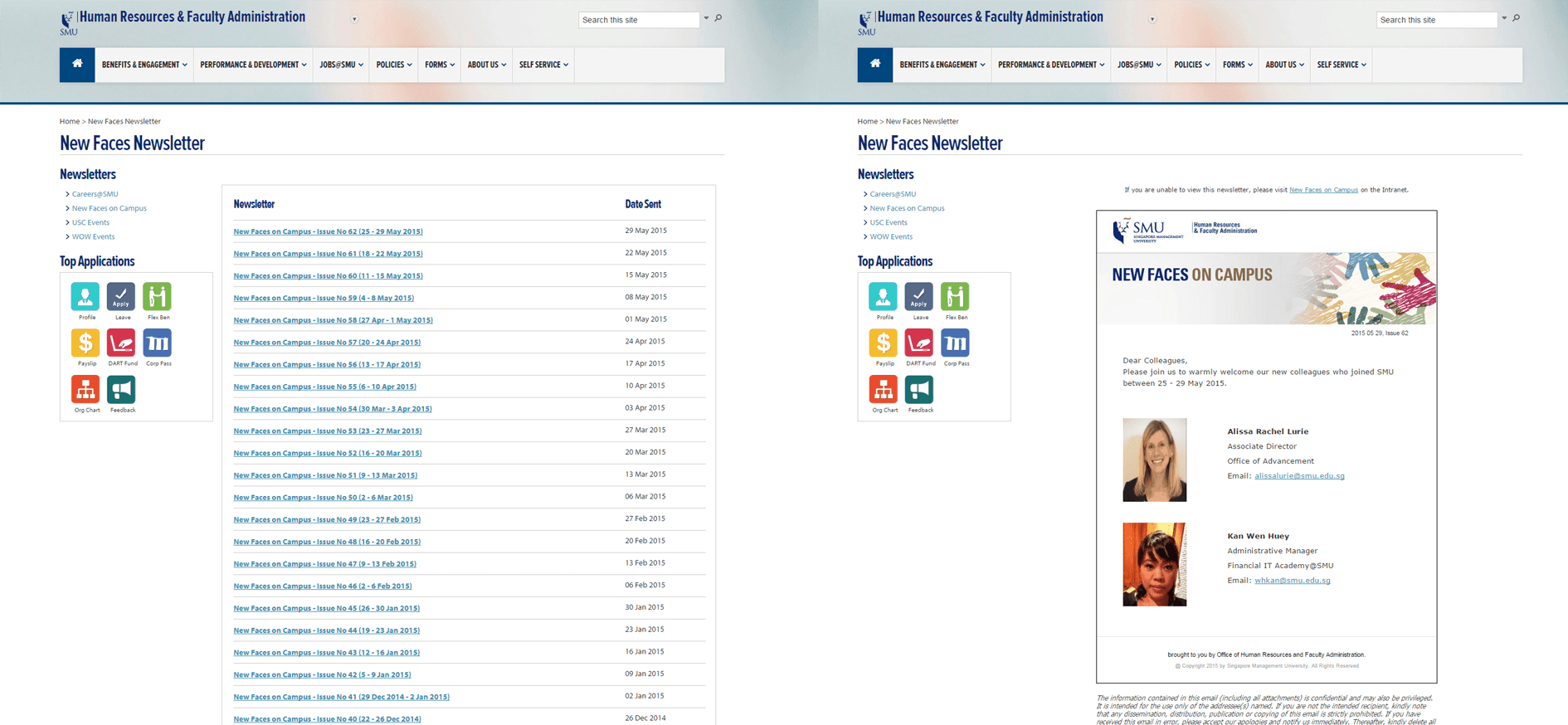
SMU’s intranet helps to automatically create a newsletter introducing new joiners. Screenshot appears courtesy of SMU.
An important part of onboarding DEX is also making sure that new employees get to know their new colleagues, and vice versa! Singapore Management University (SMU) is a busy university. Its intranet helps to generate a ‘New Faces on Campus’ newsletter (and intranet web parts) to introduce new staff members each week.
The user creating the newsletter drags and drops relevant photos and fills in the info on the new employees. On a scheduled timer, the system automatically sends a preview of the newsletter to the HR department. After making any necessary edits, the newsletter is automatically sent out to all employees at 5 pm on Fridays. A copy is auto-archived on the intranet, and web parts in the HR site and on the intranet homepage are also updated. The New Faces on Campus newsletter and web parts help new hires feel valued and connect with their colleagues.
Rambler Group’s new hire module
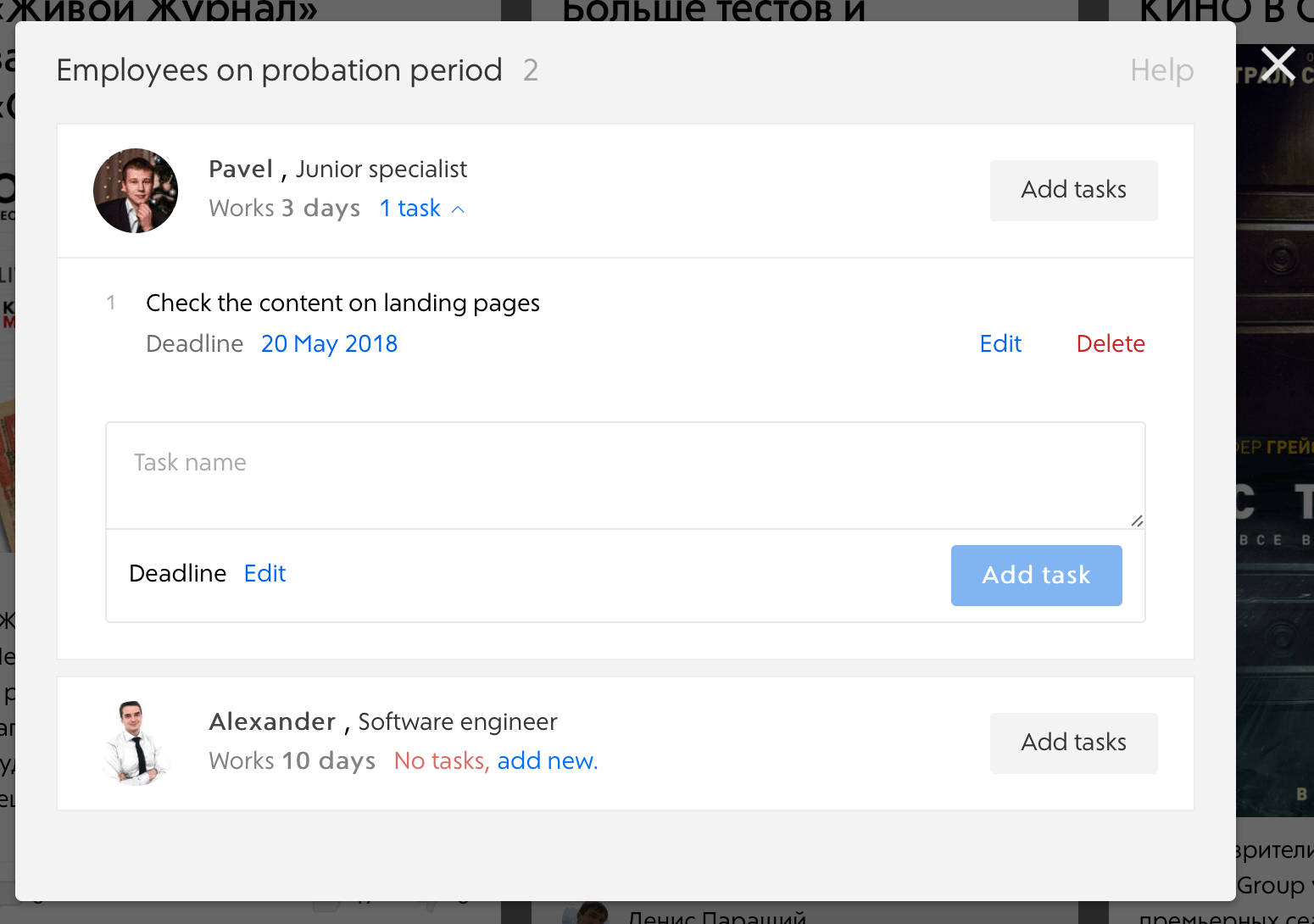
Rambler Group’s intranet hiring module includes the ability to set specific tasks for new joiners during the probationary period. Screenshot appears courtesy of Rambler Group.
Russian technology and media group Rambler Group has a custom-built intranet which seeks to drive an excellent digital experience for employees as well as automate business processes, including several core HR processes. The intranet includes a ‘hiring’ module which automates several onboarding processes, and also provides managers with the ability to set individual tasks for employees during their probationary period. This helps new employees keep on top of various onboarding activities which might be more specific to their roles rather than on a generic checklist.
Deliver great onboarding DEX
A variety of different tactics can provide a great onboarding DEX. From an app, to an intranet, to a specific portal, digital channels can support an excellent onboarding experience. Whatever works best for your organisation, as long as you remain focused on the user experience as well as driving organisational efficiencies, there are opportunities to be had to realise large benefits. Good luck with delivering a great onboarding DEX!





